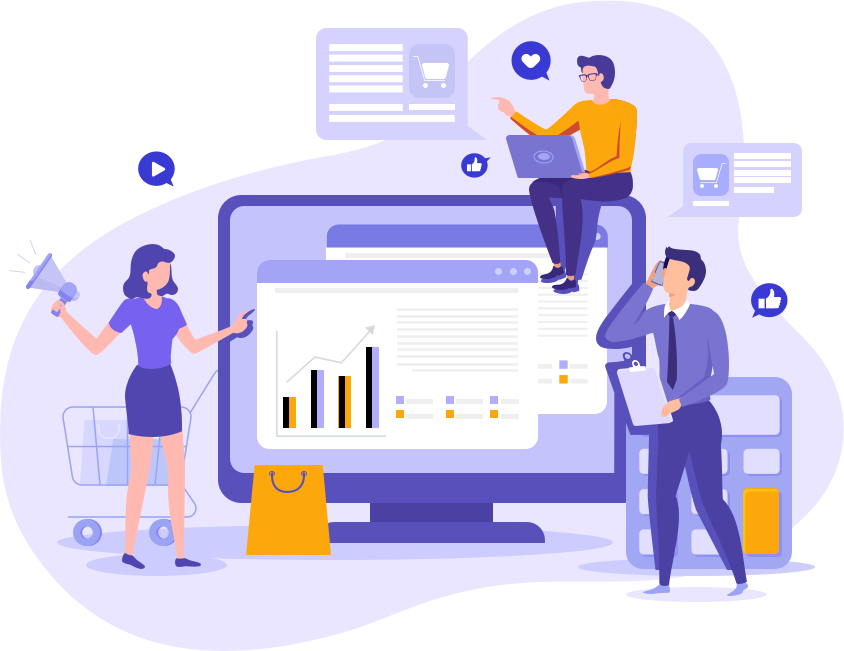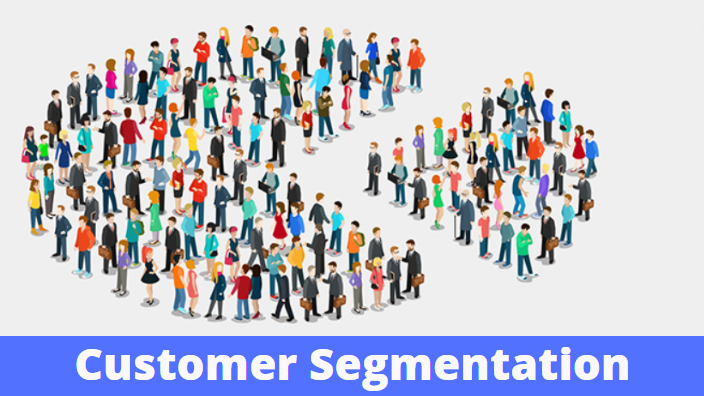
In the recent era and age of digitally driven marketing, staying on top of the latest trends in martech is more important than ever to ensure you can effectively reach your target audience. From automated customer service solutions to new ways of track creative performance and success, there are a plethora of opportunities available for businesses that want to make sure they have the right tools to stay competitive. In this blog post, we’ll take a dive into some key trends in martech today so you know how best to keep up with changing demands from both customers and marketers alike.
Understanding AI in MarTech and it’s benefits
With the rise of Artificial Intelligence (AI) in martech, businesses are finding new and innovative ways to increase efficiency and optimize operations. AI-driven automation solutions enable faster decision making that can result in improved customer experiences and increased profit margins. AI solutions can also provide companies with invaluable insights into customer behavior so they can better understand and address their needs as quickly as possible. Additionally, AI streamlines manual tasks, allowing organizations to focus less on mundane tasks and instead dedicate more time to creative problem solving. All in all, AI has become an invaluable tool for businesses looking to leverage the latest technologies to stay competitive in today’s marketplace.
Trends you must know
1. Contextual targeting
Contextual targeting, also known as content-based targeting, is a powerful marketing tool that can significantly increase the impact of campaigns. By allowing companies to identify where potential customers are spending their time online, contextual targeting helps tailor a message specifically for that audience. This type of advertising ensures every impression is relevant and attention-grabbing, as well as allows marketers to capture users’ interest right away with carefully selected messages and images. With contextual targeting, companies can reach their target audience quickly and efficiently with less costly impressions than other types of digital advertising. Contextual targeting truly offers so much possibilities to customize the user experience while boosting overall engagement. It’s no wonder why most brands are moving towards this form of communication in today’s digital era.
2. A focus on CRM improvement
Investing in customer relationship management is a vital step for any successful business, as it ensures customers remain happy and loyal to your brand. Improving customer retention, building better relationships with existing customers, and creating more opportunities for future growth can all be achieved with an effective CRM plan. With the right strategy and tools, businesses can form strong connections with their customers and make it easy to manage communication and feedback. By taking advantage of CRM improvements, businesses will not only be able to better service current customers but also attract new potential leads. An excellent CRM plan helps every part of a business by streamlining operations, improving customer experience, and ultimately driving revenue growth – all important pieces for any business to stay competitive in today’s economy.
3. Balancing demand generation and demand capture
Automating the process of capturing and generating demand is a critical part of any successful business. Balancing demand generation and capture requires a thorough understanding of both customer needs and business objectives. With this knowledge in place, businesses can create strategies and campaigns to target specific customers in the most effective way, ensuring that the maximum yield is guaranteed with minimal effort. Different tactics like attending industry events, providing discounts for current customers or running targeted campaigns can give businesses an immense competitive advantage and maximize their return on investment. Therefore, it is important to prioritize balancing demand generation and capture in order to create a thriving business.
4. Tailored and real-time content
In today’s digital age, businesses and organizations are always looking for new and innovative ways to keep their content relevant. Tailored and real-time content is one of those ways to ensure that users are receiving the most up-to-date information when they need it. Through tailored and real-time content, companies can now optimize their content so that it matches the interests and needs of their customers or interested parties in an immediate way. As such, users don’t feel like they are missing out; instead, they can be sure that the company is providing them with up-to-date information as soon as it happens. By taking advantage of tailored and real-time content, companies can develop loyal relationships with their audience members at a much faster rate than what could be achieved in the past.

5. Interactive marketing
Interactive marketing is truly transformative. Marketers are no longer limited to simply broadcasting their message, but instead use interactive approaches to engage with their audiences. From live-tweeting events and creating engaging social media campaigns to utilizing multimedia tools to offer an immersive experience, interactive marketing enables brands to connect with consumers on a much deeper level than ever before. Today’s customers expect more from the products and services they use, and interactive marketing can help fulfill this need by delivering unique and personalized messages that keep people’s interest for longer periods of time. If used effectively, interactive marketing can be an invaluable tool for any business looking to increase its reach and visibility.
6. Ad campaign automation
Automation is changing the way businesses advertise and reach potential customers. Through ad campaign automation, a business can make sure that their ads are reaching the right customers quickly and at the best cost. Businesses now benefit from detailed analysis of customer data to ensure their campaigns are as effective and efficient as possible. Automatically managed campaigns also allow businesses to optimize their efforts with faster adjustments based on customer interests, helping them stay one step ahead in their advertising efforts. All of this is making ad campaign automation an invaluable asset to businesses of all sizes.
7. Email marketing
Email marketing is one of the most effective strategies out there for business owners to utilize. It allows companies to reach a wide audience with minimal effort, maintain relationships with existing customers, and increase brand awareness. By sending attractive and engaging emails, companies can grab the attention of their prospective clients and entice them to learn more about what they have to offer. Email marketing also provides businesses with an innovative way to measure conversions and determine the success of their campaigns. Combined with other digital marketing tools like SEO, email offers businesses an affordable way to interact directly with customers and grow their business.
8. Leveraging chatbots and automated service
Companies everywhere are embracing the power of leveraging chatbots and automated service in order to simplify customer interactions and increase efficiency. Automation of customer-oriented services has opened up new possibilities for streamlining routine tasks, allowing customers to quickly get the information they need without having to wait for a human response. Not only does this free up employee time for more pressing tasks, but it can also lead to improved customer satisfaction when powered by natural language processing technologies that understand context and provide fast and accurate answers. In addition, these services can be tailored to each customer’s individual needs, helping businesses better target their offerings in a cost-effective manner. Automation is here to stay, giving companies the opportunity to focus their efforts on what really matters: crafting truly personalized experiences that engage customers at every step.
9. Power of personalization
Personalization is a powerful way to connect with individuals and create meaningful relationships. Tailoring content, products, or services to meet the specific needs of an individual can build trust and ultimately result in conversions. Personalized plans, suggestions, and recommendations also show that you understand your customers’ preferences better than they do themselves, leading to a feeling of being heard and appreciated. Companies that prioritize personalization strategies when interacting with customers are better positioned to earn their loyalty and maximize their bottom line.

10. The rise of voice search and its implications for marketers
The rise of voice search has been revolutionizing and transforming how we interact with technology, and it’s also having a significant impact on marketing. With a 49% rise in the number of voice search queries recorded since 2018, businesses are now challenged to tweak their marketing strategies to optimize for voice search. It is especially critical for hotels and restaurants who must recognize that people are now searching by saying things like “Hey Google, what’s the nearest Italian restaurant?” as opposed to typing these queries into a search engine. Furthermore, having one targeted page or blog post not just optimized but crafted to answer specific questions can significantly enhance the chances of being featured in a voice search result. As they increase, marketers need to stay informed on this rapidly emerging trend, adjusting accordingly if they wish to remain competitive.
How to use predictive analytics to improve campaigns ?
Predictive analytics is a powerful tool for improving campaigns by providing insights into consumers’ preferences, behaviors and expectations. Thanks to advancements in technology, it can now be much more accurate than before. Through predictive analytics, businesses can create more detailed profiles of target customers and anticipate their reaction to a certain message or offer. Predictive analytics can also be used to identify underperforming parts of a campaign, allowing marketers to tailor their messages accordingly in order to get the best results possible. This kind of analysis enables marketers to make informed decisions on how best to proceed with campaigns in order to optimize results and reach the desired audience accurately.
Conclusion
In conclusion, Martech is an essential component of any business, providing powerful tools to create highly personalized and real-time customer experiences. Furthermore, its capabilities extend beyond marketing, working as a gateway for businesses to access the multitude of benefits AI has to offer. As AI progresses further and further with each passing day, marketers must remain up-to-date with the latest trends in order to make the most effective strategic decisions. Not only does this include techniques such as contextual targeting and demand generation, but it involves traditional strategies such as email and automated ad campaigns as well. Despite the challenges any marketer faces when attempting to incorporate Martech into their activities, staying mindful of the opportunities that AI provides can help them continually optimize their efforts for maximum impact. Thus, embracing Martech allows companies to reach more prospects than ever before through clever marketing tactics based on personalization and predictive analytics.
No Comments